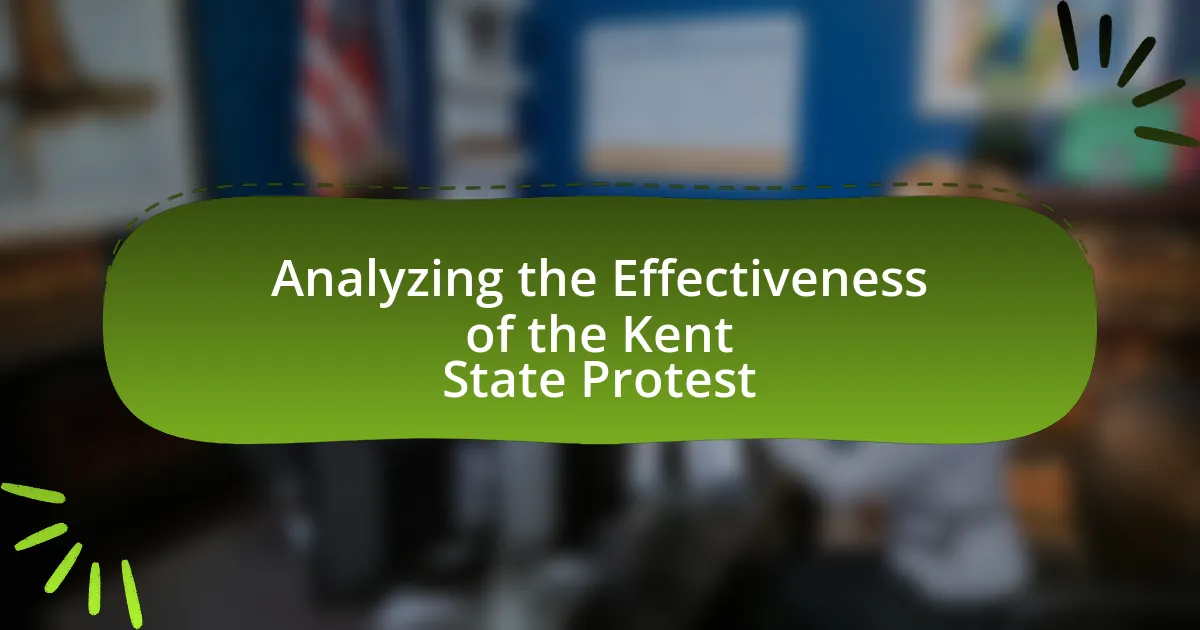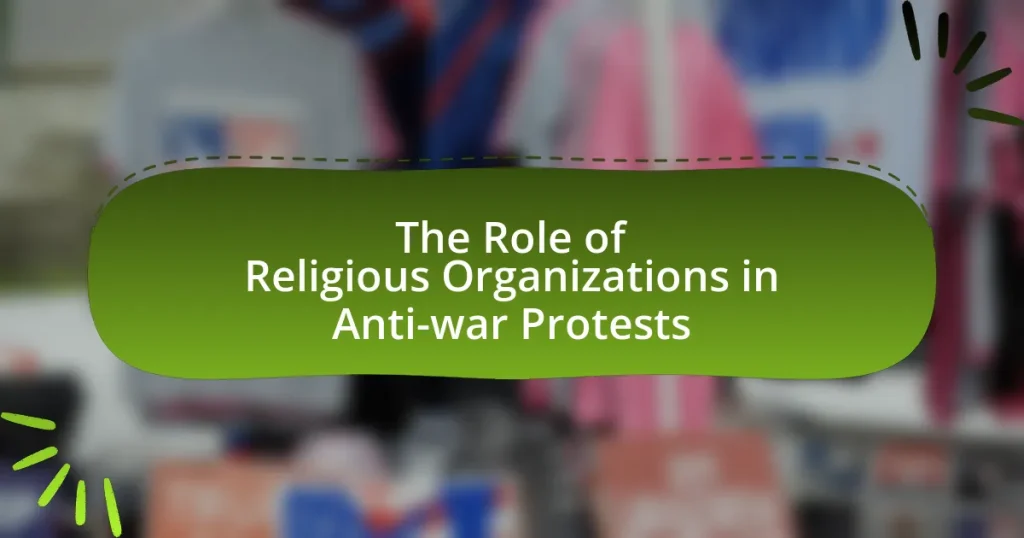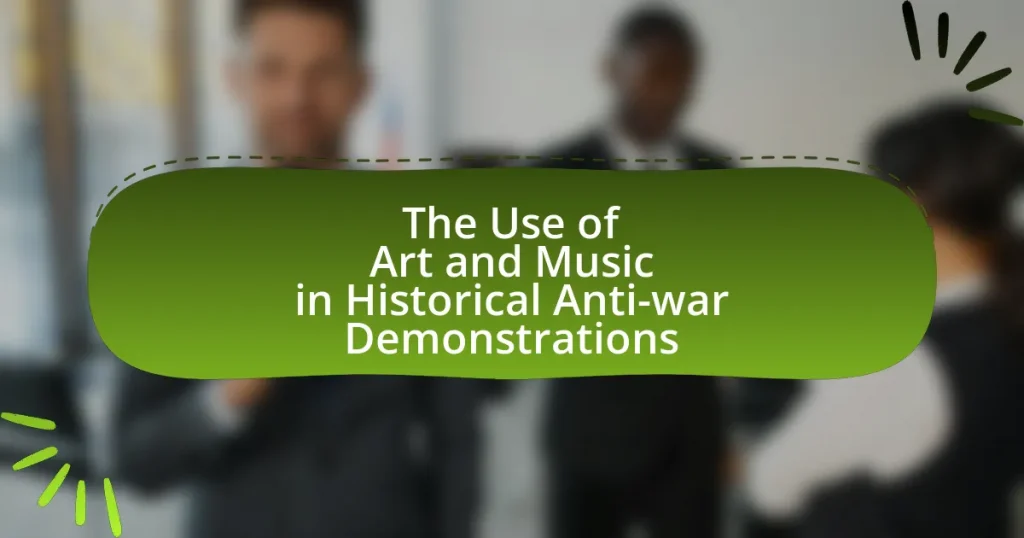The Kent State Protest, a significant event during the Vietnam War, involved demonstrations against the U.S. invasion of Cambodia, culminating in the tragic shooting of four students by the Ohio National Guard on May 4, 1970. This incident highlighted the growing anti-war sentiment among college students and became a pivotal moment in the broader anti-war movement, leading to increased public awareness and activism. The article analyzes the factors leading to the protest, the role of the university administration, the immediate and long-term impacts on public opinion and activism, and the lessons learned for contemporary movements. It emphasizes the importance of peaceful protest, effective communication, and the influence of media in shaping public perception and policy regarding governmental actions.
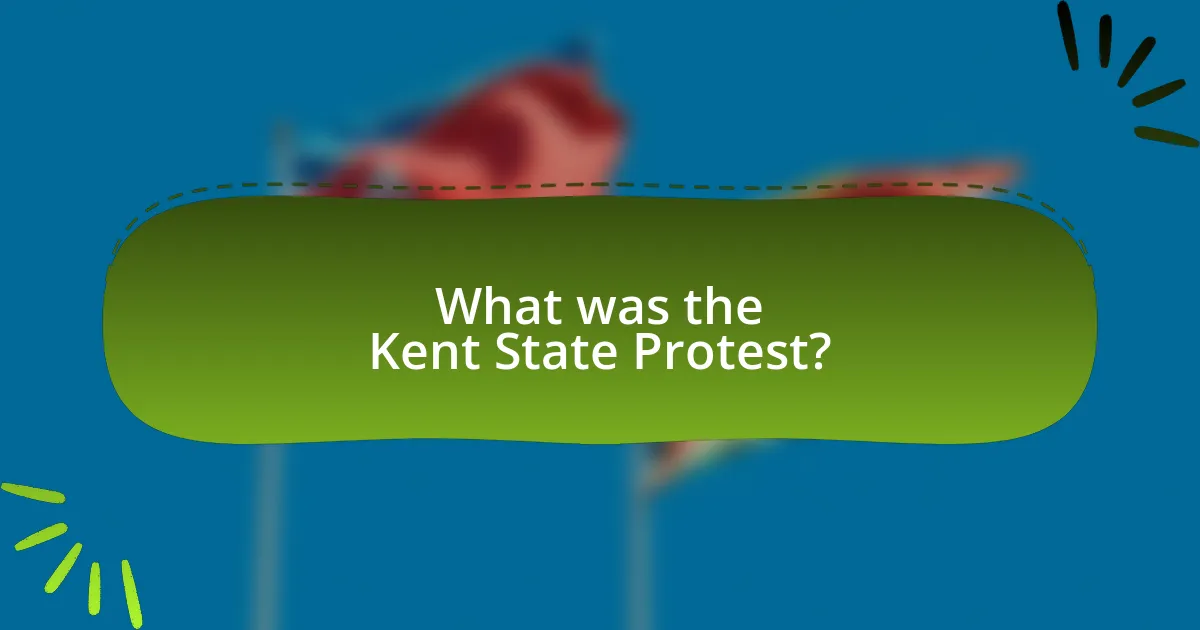
What was the Kent State Protest?
The Kent State Protest was a series of demonstrations against the United States’ invasion of Cambodia during the Vietnam War, culminating in a tragic event on May 4, 1970, when Ohio National Guardsmen shot and killed four students at Kent State University. This protest was part of a larger wave of anti-war sentiment across the country, reflecting widespread opposition to U.S. military involvement in Vietnam. The incident at Kent State became a pivotal moment in the anti-war movement, leading to increased public awareness and activism against the war, as well as significant changes in public opinion regarding U.S. military actions.
What events led to the Kent State Protest?
The Kent State Protest was primarily triggered by the United States’ invasion of Cambodia during the Vietnam War on April 30, 1970. This military action escalated anti-war sentiments among college students, particularly at Kent State University. On May 4, 1970, a peaceful protest against the invasion led to a confrontation with the Ohio National Guard, resulting in the tragic shooting of four students. This incident highlighted the growing divide between the government and the youth, as well as the intense opposition to the Vietnam War, which had been a source of national unrest since the early 1960s. The protest and subsequent violence became a pivotal moment in the anti-war movement, symbolizing the broader societal conflict over U.S. involvement in Vietnam.
How did the Vietnam War influence the protest?
The Vietnam War significantly influenced the protest by intensifying anti-war sentiment among the American public, particularly among students. The Kent State protest, which occurred in May 1970, was a direct response to the U.S. invasion of Cambodia and the ongoing conflict in Vietnam, leading to widespread outrage and mobilization. This event exemplified the growing discontent with government policies, as protests surged across college campuses, reflecting a broader national movement against the war. The tragic shooting of four students by the National Guard during the Kent State protest galvanized public opinion and highlighted the tensions between the government and anti-war activists, ultimately contributing to a decline in support for the Vietnam War.
What role did the university’s administration play in the events?
The university’s administration played a significant role in the events surrounding the Kent State protest by implementing policies that escalated tensions between students and law enforcement. Specifically, the administration’s decision to close the campus and ban demonstrations contributed to a charged atmosphere, leading to the tragic confrontation on May 4, 1970. This decision was influenced by national unrest and a desire to maintain order, but it ultimately resulted in a violent clash that left four students dead. The administration’s actions, including the lack of communication with student leaders and failure to address grievances, are often cited as critical factors that exacerbated the situation.
What were the main objectives of the Kent State Protest?
The main objectives of the Kent State Protest were to oppose the United States’ invasion of Cambodia during the Vietnam War and to advocate for peace and an end to the war. The protest aimed to raise awareness about the consequences of U.S. military actions and to mobilize public opinion against the war. On May 4, 1970, the protest escalated when National Guardsmen fired on students, resulting in four deaths, which further galvanized anti-war sentiment across the nation.
What specific issues were the protesters addressing?
The protesters were addressing opposition to the Vietnam War, specifically the U.S. military invasion of Cambodia in 1970. This invasion escalated anti-war sentiments among students and activists, leading to widespread demonstrations. The Kent State protest highlighted concerns over the loss of life, the moral implications of U.S. involvement in Vietnam, and the perceived disregard for student voices in political decisions. The tragic outcome of the protest, where four students were killed by the National Guard, underscored the urgency and gravity of the issues being raised, amplifying national attention on anti-war activism.
How did the protestors plan to achieve their goals?
The protestors planned to achieve their goals through organized demonstrations, strategic communication, and mobilization of community support. They aimed to raise awareness about the Vietnam War and its implications, particularly the Kent State shootings, by utilizing peaceful protests, sit-ins, and rallies to gather public attention and media coverage. Evidence of their effectiveness can be seen in the widespread media attention the protests received, which amplified their message and garnered national outrage, ultimately influencing public opinion and policy discussions regarding the war.
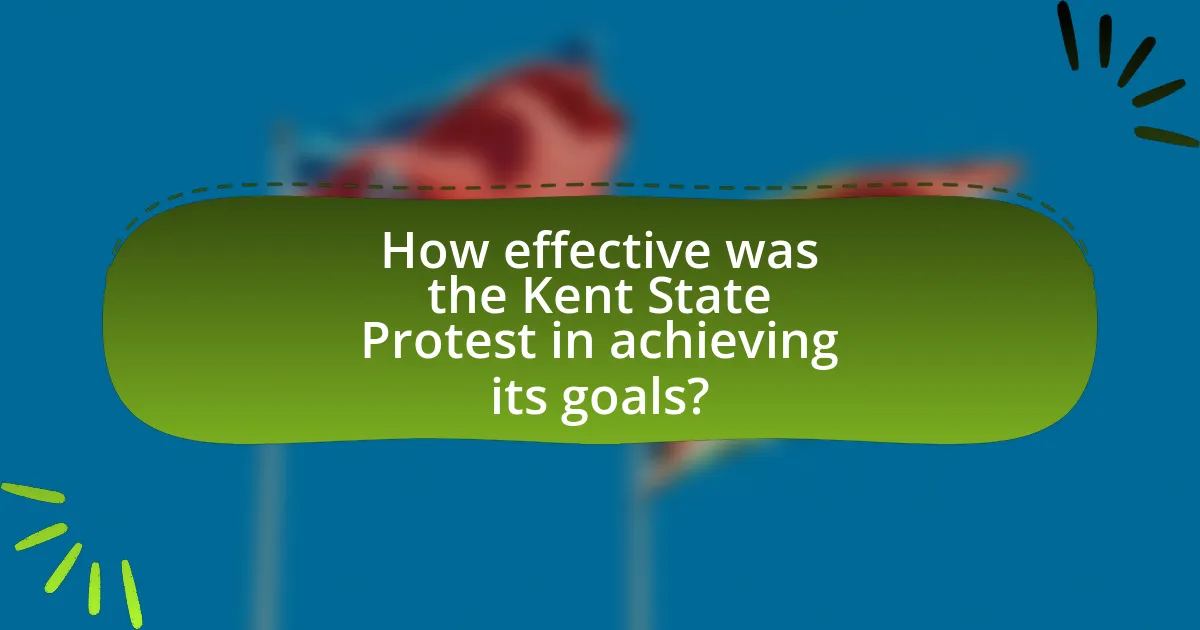
How effective was the Kent State Protest in achieving its goals?
The Kent State Protest was effective in raising national awareness about the anti-Vietnam War movement and the consequences of U.S. military actions, particularly after the tragic events of May 4, 1970, when four students were killed by the National Guard. This incident galvanized public opinion and led to widespread protests across the country, significantly increasing opposition to the Vietnam War. The immediate aftermath saw a surge in student activism and a shift in public discourse regarding U.S. involvement in Vietnam, evidenced by the fact that the protest contributed to a decline in support for the war, as reflected in public opinion polls at the time.
What immediate impacts did the protest have on public opinion?
The Kent State protest immediately shifted public opinion by increasing awareness and opposition to the Vietnam War among the American populace. Following the tragic events of May 4, 1970, public sentiment turned sharply against the war, with a significant rise in anti-war demonstrations and a Gallup poll indicating that support for the war dropped from 60% to 39% within weeks. This protest catalyzed a broader movement, leading to heightened media coverage and discussions around the implications of U.S. military involvement abroad, thereby solidifying a more critical stance among citizens regarding government policies.
How did media coverage shape perceptions of the protest?
Media coverage significantly shaped perceptions of the Kent State protest by framing the narrative around the events and influencing public opinion. The extensive reporting of the tragic shooting of four students by the National Guard on May 4, 1970, highlighted the violent response to peaceful protests against the Vietnam War, which garnered national outrage and sympathy for the students. Coverage by major outlets, such as The New York Times and television broadcasts, emphasized the emotional impact of the incident, leading to a widespread perception of the protest as a pivotal moment in the anti-war movement. This framing contributed to increased activism and a shift in public sentiment regarding U.S. involvement in Vietnam, as evidenced by a surge in protests and a decline in support for the war following the incident.
What was the reaction from government officials and law enforcement?
Government officials and law enforcement reacted with significant concern and condemnation regarding the Kent State protest. Following the events of May 4, 1970, where National Guardsmen shot and killed four students, officials expressed a mix of regret and justification for the use of force. Ohio Governor James Rhodes labeled the protesters as “the worst type of people,” indicating a strong disapproval of the anti-war sentiment. Law enforcement, particularly the National Guard, defended their actions by stating they were responding to perceived threats to public safety. This reaction highlighted the tension between governmental authority and civil dissent during a period of national unrest over the Vietnam War.
What long-term effects did the Kent State Protest have on activism?
The Kent State Protest had significant long-term effects on activism, particularly in shaping anti-war movements and increasing public awareness of governmental actions. The tragic events of May 4, 1970, where four students were killed by National Guardsmen during a protest against the Vietnam War, galvanized a generation and led to widespread protests across college campuses and beyond. This incident highlighted the potential for violence in political dissent and prompted a more organized and strategic approach to activism, including the establishment of coalitions and networks among various social movements. The protest also contributed to a shift in public opinion regarding the Vietnam War, ultimately influencing U.S. policy and leading to increased scrutiny of government actions. The legacy of Kent State continues to inspire contemporary activism, emphasizing the importance of peaceful protest and the need for accountability in governance.
How did the protest influence future anti-war movements?
The Kent State protest significantly influenced future anti-war movements by galvanizing public opinion against the Vietnam War and highlighting the consequences of military actions on American soil. The tragic events of May 4, 1970, where four students were killed by National Guardsmen, sparked widespread outrage and led to increased activism across the country. This incident became a pivotal moment, inspiring a surge in protests and demonstrations, as it underscored the urgency of addressing governmental policies and military interventions. The protest also contributed to a shift in the narrative surrounding war, as it illustrated the potential for violence against civilians and the need for accountability, ultimately shaping the strategies and messaging of subsequent anti-war movements throughout the 1970s and beyond.
What changes occurred in university policies following the protest?
Following the Kent State protest, universities implemented significant changes in their policies regarding student rights and campus security. Specifically, many institutions revised their codes of conduct to better protect students’ rights to free speech and assembly, reflecting a heightened awareness of the need for dialogue between administration and student bodies. Additionally, universities increased transparency in their disciplinary processes and established clearer protocols for handling protests, aiming to prevent violent confrontations. These changes were influenced by the national outcry and the tragic events at Kent State, which underscored the importance of addressing student concerns in a constructive manner.
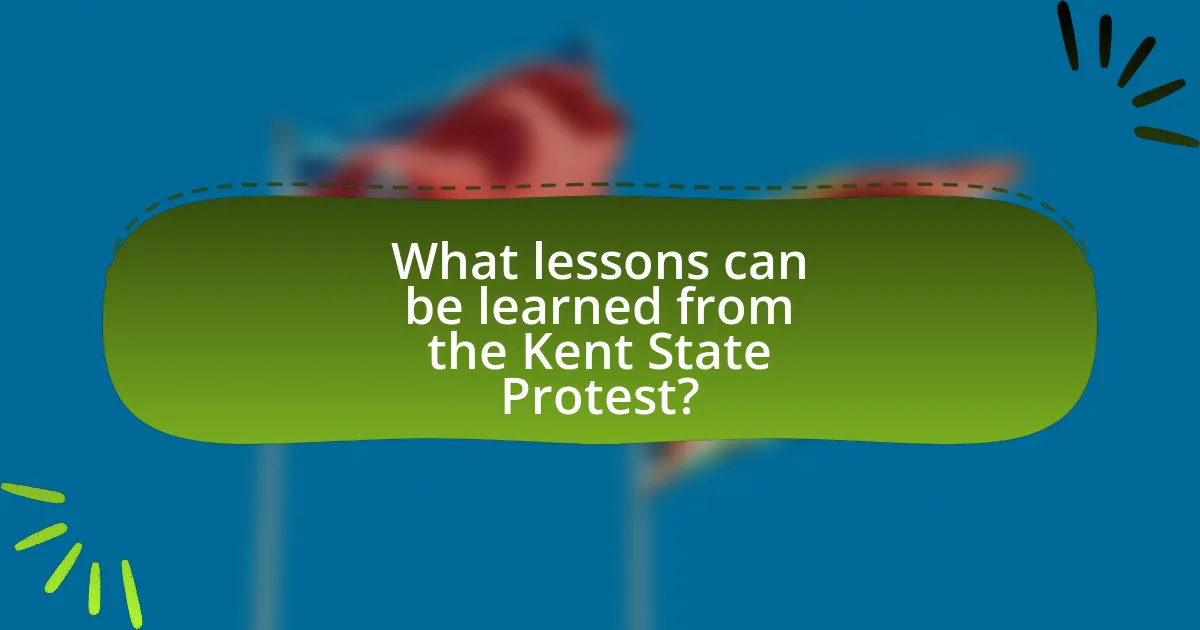
What lessons can be learned from the Kent State Protest?
The Kent State Protest teaches the importance of peaceful protest and the potential consequences of government response to dissent. The tragic events on May 4, 1970, where four students were killed by National Guardsmen during a protest against the Vietnam War, highlight the need for dialogue and understanding between authorities and citizens. This incident led to widespread outrage and increased anti-war sentiment across the United States, demonstrating how violent repression can galvanize public opinion and activism. The protest also underscores the necessity for institutions to prioritize the safety and rights of individuals during demonstrations, as well as the critical role of media in shaping public perception and accountability in such events.
How can current activists apply the lessons from the Kent State Protest?
Current activists can apply the lessons from the Kent State Protest by emphasizing the importance of peaceful demonstration and the need for clear communication of their goals. The Kent State Protest, which occurred in 1970 against the Vietnam War, highlighted how violent responses to protests can lead to tragic outcomes, as seen when National Guardsmen killed four students. This incident underscores the necessity for activists to prioritize non-violence and to engage in dialogue with authorities to prevent escalation. Additionally, the widespread media coverage of the Kent State incident illustrates the power of media in shaping public perception; thus, current activists should leverage social media and traditional outlets to amplify their messages and mobilize support effectively.
What strategies were effective in mobilizing support during the protest?
Effective strategies in mobilizing support during the Kent State protest included grassroots organizing, strategic use of media, and coalition-building among various student and community groups. Grassroots organizing involved local student leaders engaging peers through meetings and rallies, which fostered a sense of community and urgency. The strategic use of media, particularly through flyers, posters, and local news coverage, amplified the protest’s message and attracted wider attention. Coalition-building with other organizations, such as civil rights groups and anti-war activists, expanded the protest’s reach and demonstrated a united front against the Vietnam War, ultimately leading to increased participation and support.
What mistakes should modern movements avoid based on this event?
Modern movements should avoid fragmentation and lack of clear messaging, as demonstrated by the Kent State protest, where diverse agendas diluted the overall impact. The protest’s effectiveness was compromised by the inability to unify participants around a single, coherent goal, leading to confusion and diminished public support. Historical analysis shows that successful movements, such as the Civil Rights Movement, maintained focused objectives, which garnered widespread engagement and media attention. Therefore, clarity and unity in purpose are essential for modern movements to achieve their goals effectively.
What role does historical context play in understanding the protest’s effectiveness?
Historical context is crucial in understanding the effectiveness of the Kent State protest, as it situates the event within the broader landscape of the Vietnam War and the civil rights movement. The protest occurred on May 4, 1970, against the backdrop of escalating anti-war sentiment and widespread student activism, which amplified its impact. The historical significance of the Kent State protest is underscored by the fact that it was a response to the U.S. invasion of Cambodia, which intensified public outrage and mobilized thousands of students nationwide. This context not only heightened the emotional resonance of the protest but also led to a national conversation about war, peace, and civil liberties, ultimately influencing public opinion and policy. The tragic outcome, with four students killed by National Guardsmen, galvanized further protests and solidified the event’s place in American history as a pivotal moment in the anti-war movement.
How can understanding the 1970s political climate enhance our analysis?
Understanding the 1970s political climate enhances our analysis by providing context for the social movements and governmental responses of the era. The Kent State Protest occurred against a backdrop of widespread anti-Vietnam War sentiment, civil rights activism, and a growing distrust in government, particularly following events like the My Lai Massacre and the Pentagon Papers’ release. These factors influenced public perception and mobilization, making the protest a pivotal moment in the broader anti-war movement. The National Guard’s violent response, which resulted in four student deaths, galvanized national outrage and led to increased activism, illustrating the profound impact of the political environment on the protest’s effectiveness and legacy.
What parallels can be drawn between the Kent State Protest and contemporary movements?
The Kent State Protest and contemporary movements share significant parallels in their focus on anti-war sentiments and the demand for social justice. Both movements emerged in response to perceived government overreach and violence, with the Kent State Protest specifically reacting to the U.S. invasion of Cambodia during the Vietnam War, which resulted in the tragic deaths of four students by National Guardsmen in 1970. Similarly, contemporary movements, such as Black Lives Matter, respond to systemic violence and injustice, particularly against marginalized communities.
Both movements utilize grassroots organizing and social media to mobilize supporters, raise awareness, and advocate for change. The Kent State Protest galvanized public opinion and led to widespread protests across the nation, reflecting a collective outrage that resonates with the viral nature of contemporary movements, which leverage digital platforms to amplify their messages and reach a global audience.
Furthermore, both the Kent State Protest and contemporary movements highlight the role of youth activism in shaping political discourse. The students at Kent State became symbols of resistance, much like young activists today who challenge the status quo and demand accountability from their leaders. This continuity in activism underscores a persistent struggle against injustice and the enduring impact of protest on societal change.
What practical steps can activists take to ensure their voices are heard today?
Activists can ensure their voices are heard today by leveraging social media platforms to amplify their messages and engage with a broader audience. Social media has proven effective in mobilizing support, as seen in movements like Black Lives Matter, which utilized platforms like Twitter and Instagram to raise awareness and organize protests. Additionally, activists should collaborate with established organizations to gain credibility and access resources, as partnerships can enhance visibility and impact. Engaging in community outreach and education helps build local support, making the movement more relatable and grounded in the community’s needs. Furthermore, participating in public forums and town hall meetings allows activists to voice their concerns directly to decision-makers, fostering dialogue and potential policy changes. These steps are supported by research indicating that grassroots movements that utilize multiple channels for communication and engagement tend to achieve greater success in influencing public opinion and policy.
